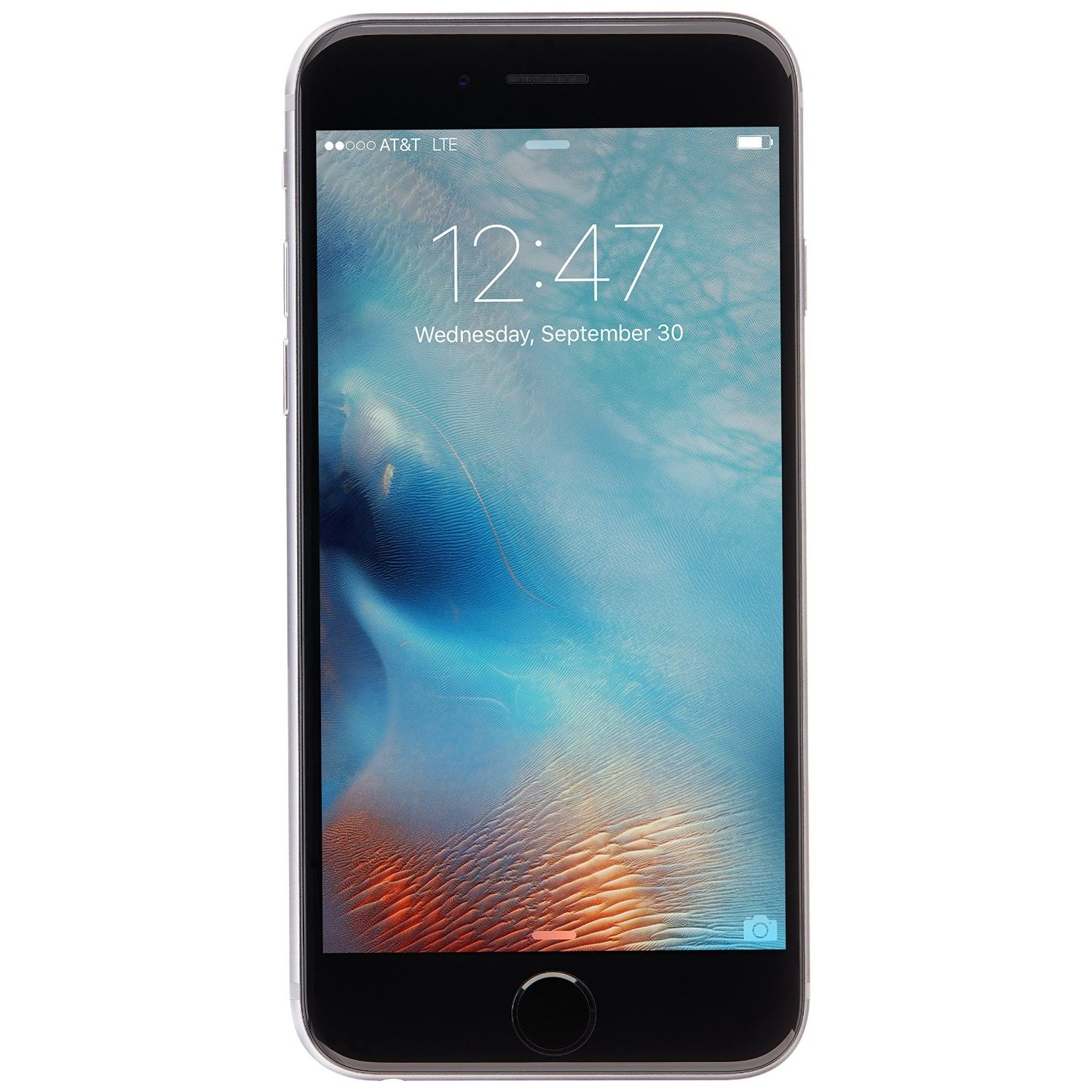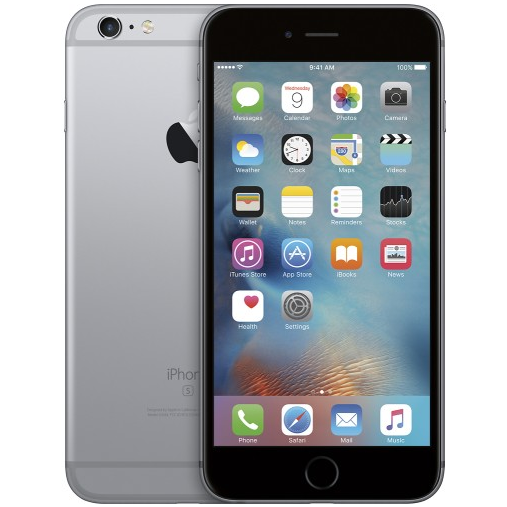Apple iPhone 6s And 6s Plus Review
The iPhone 6s and 6s Plus may look just like last year's iPhones, but hardware updates and Apple's new 3D Touch feature make them feel completely new. While the new cameras and 4K video recording may get the hype, it's the 2GB of RAM that steals the show.
Why you can trust Tom's Hardware
Battery Life And Thermal Throttling
Battery life may be the most important performance metric for a mobile device. After all, it does not matter how quickly a phone or tablet can load webpages or how many frames per second the GPU can crank through once the battery runs down and the device shuts off. To learn more about how we test this critical facet of mobile computing, please read our battery testing methodology article.
Unfortunately, we do not have any tests that run realistic workloads for assessing battery life on Apple’s platform. Instead, we’ll have to bracket the value with two worst-case conditions supplemented with some subjective experience.
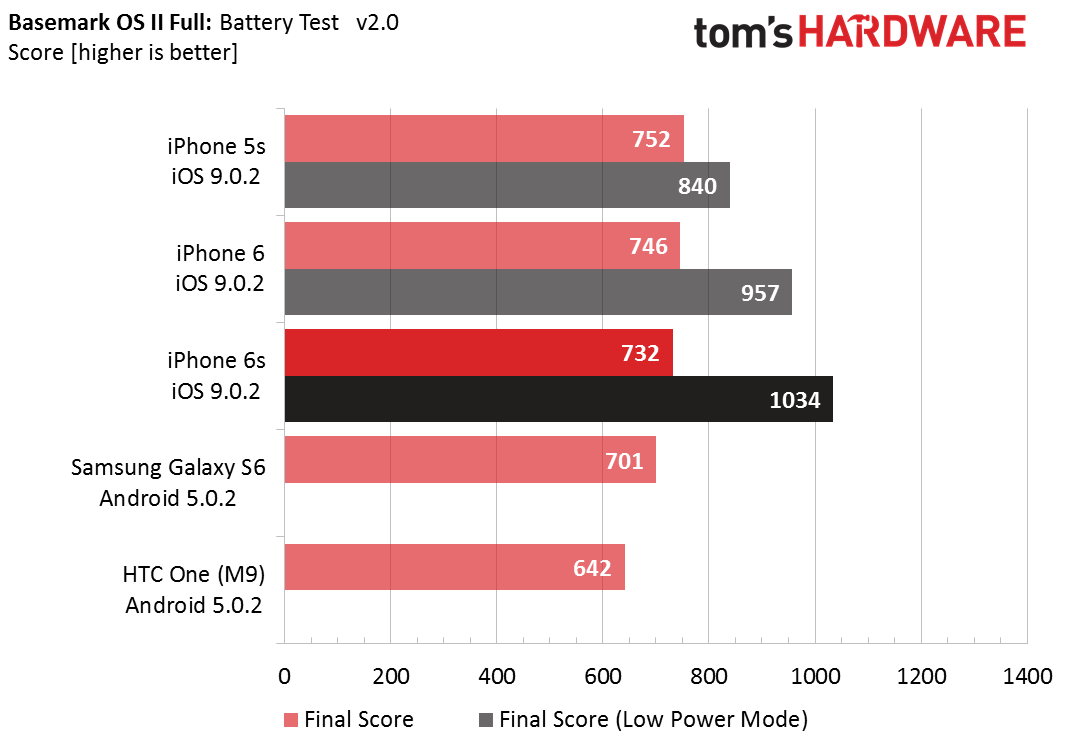
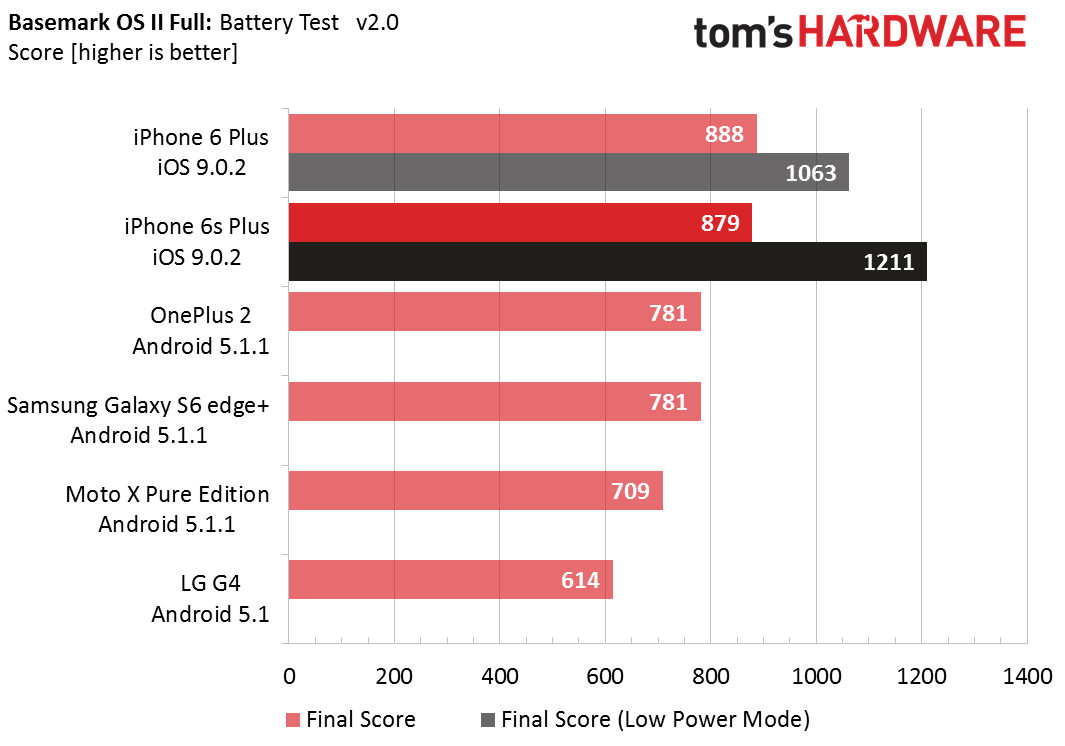
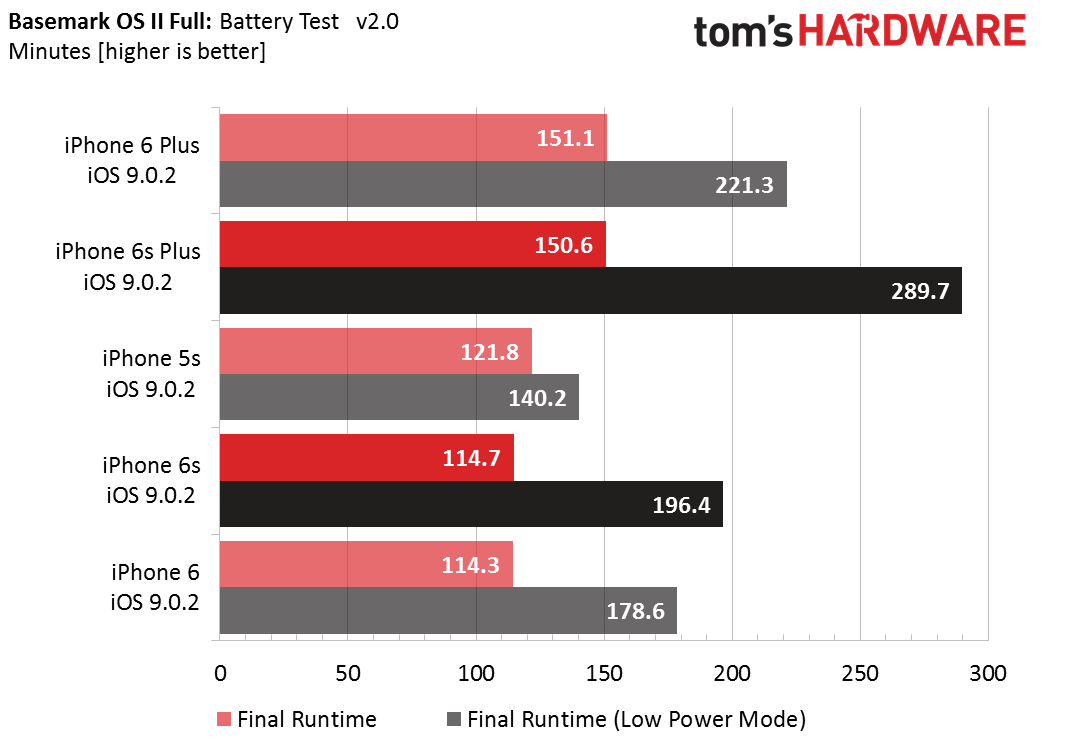
The Basemark OS II battery test runs CPU-intensive workloads and accounts for both battery life and performance. Sure, it’s completely unrealistic, but it’s a good gauge for CPU efficiency, pushing the phones hard enough to trigger thermal throttling.
With both iPhone 6s models sacrificing some battery capacity (about 5 percent) to make room for the new Taptic Engine, there was some concern about a regression in battery life. Fortunately, the efficiency gains from using FinFET and lower-power LPDDR4 memory offset what’s lost from the smaller batteries. Looking at the battery runtime chart, it’s pretty clear that Apple has a specific battery life target it designs to. The iPhone 6s runs for the same amount of time as the iPhone 6 and 5s; the two Plus-sized versions are equal too.
iPhone 6s Taptic Engine located below the battery [CREDIT: iFixit]
While an increase in battery life would have been more impressive—not to mention more useful than maintaining a thin profile—the iPhone 6s still scores about the same as the Galaxy S6 here and a little better than the One M9. Subjectively, the iPhone 6s seems to have a slight edge over the Galaxy S6 in actual daily use. The S6’s larger 5.1-inch screen (versus the iPhone’s 4.7-inch screen) accounts for most of the difference. Both the 6s and GS6 can get you through a full day in most cases, but more demanding users will need to top off at some point during the day, especially with the GS6.
The larger iPhone 6s Plus scores 13 percent higher than the OnePlus 2 and Galaxy S6 edge+, and a more noticeable 43 percent higher than the LG G4. Like the iPhone 6 Plus before it, the 6s Plus gets excellent battery life. Even when on the go from 8am till midnight while attending a show like CES—constantly checking my email and calendar, taking pictures and notes, recording audio and video, chatting via Skype, looking up info on the web—the 6 Plus never required extra juice. So far, I’m seeing the same battery life from the 6s Plus.
Get Tom's Hardware's best news and in-depth reviews, straight to your inbox.
Low Power Mode is a software feature introduced in iOS 9 that saves power by dialing back performance and features, allowing you to stretch battery life a bit further. Specifically, it reduces or turns off background data transfers (email, automatic store downloads, background app refresh), some visual effects, and Hey Siri. These are all transient events, however, making it difficult to assess their impact on battery life. The one aspect of Low Power Mode that Basemark OS II can measure is the impact of reducing the max CPU frequency.
By underclocking the CPU, Low Power Mode extends runtime in this test significantly. While we cannot determine the actual core frequency used in this mode, the frequency reduction seems to be proportional to CPU performance. In order to maintain an acceptable level of performance, the slower A7 SoC in the iPhone 5s sees a smaller frequency reduction than the much faster A9 in the iPhone 6s. The runtime extensions seem impressive here (71 percent for the 6s and 92 percent for the 6s Plus), but the actual increase in battery life will be far less since no real workload runs the CPU at 100 percent for several hours straight.
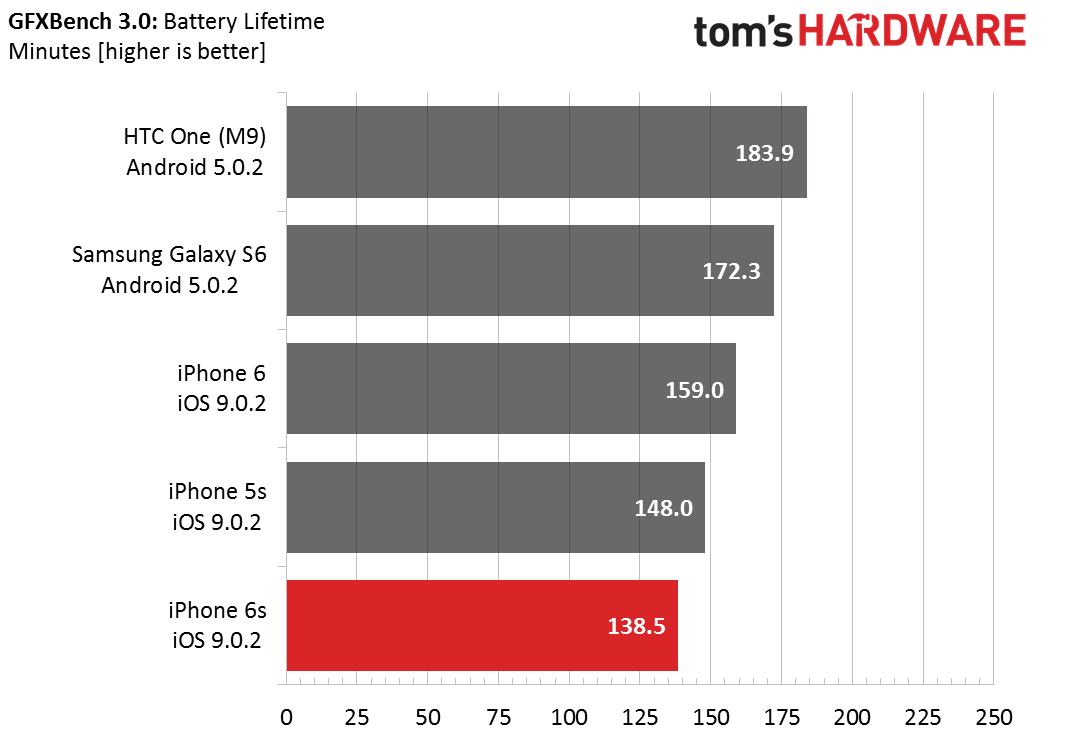
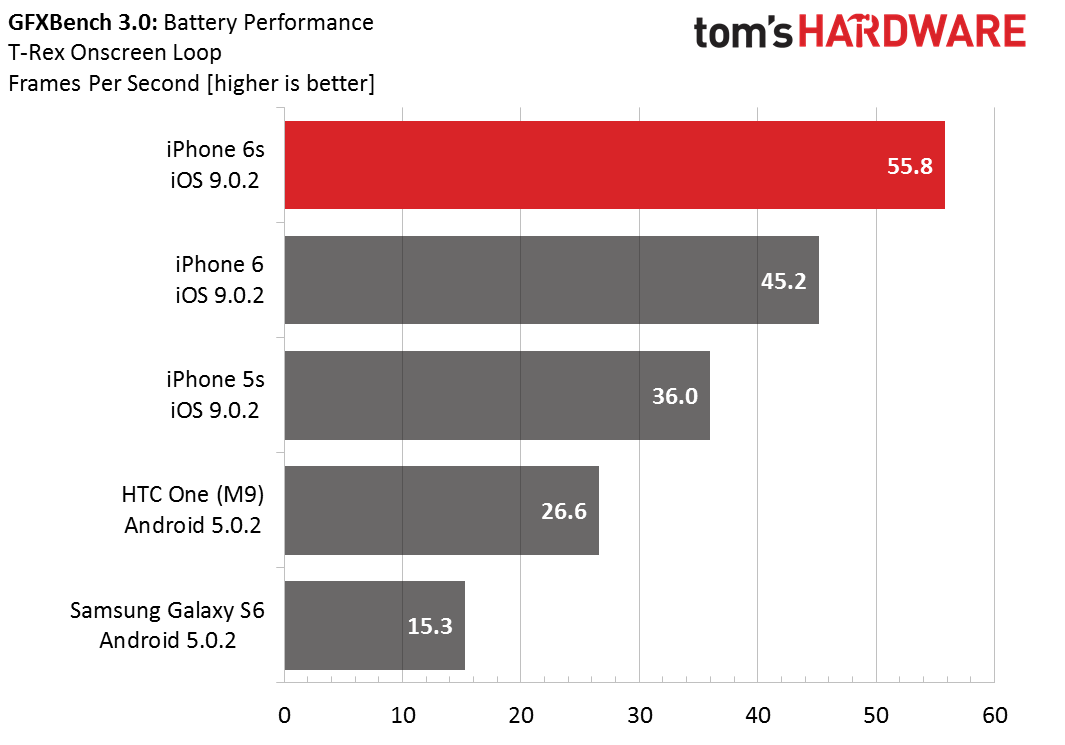
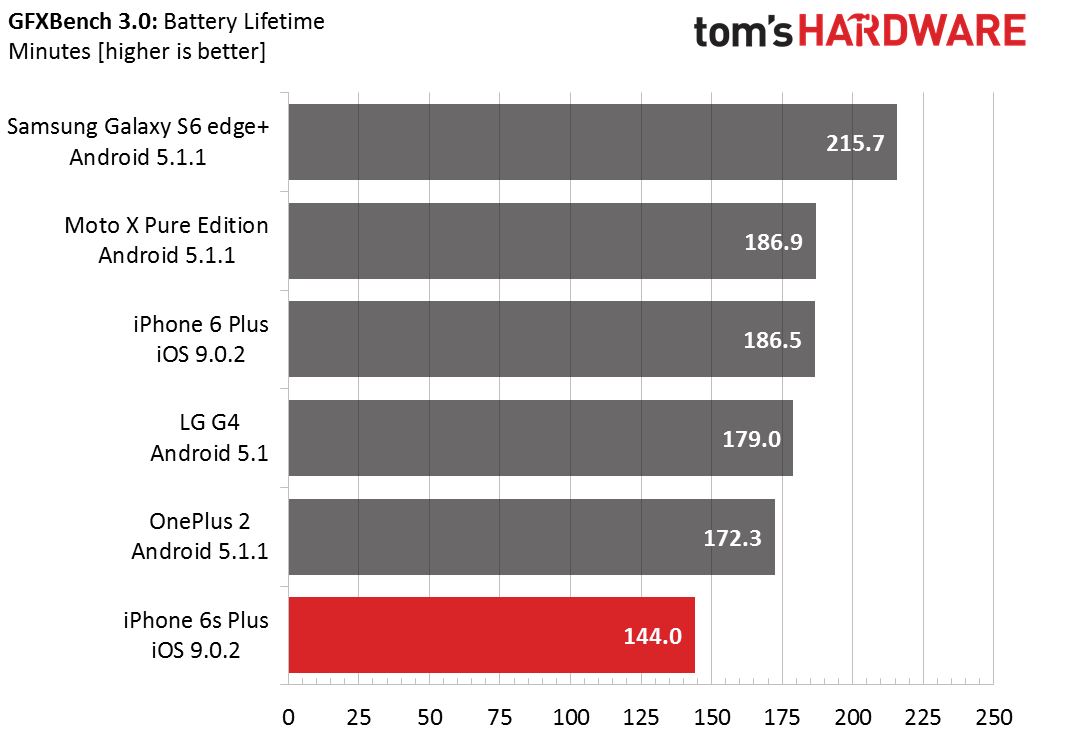
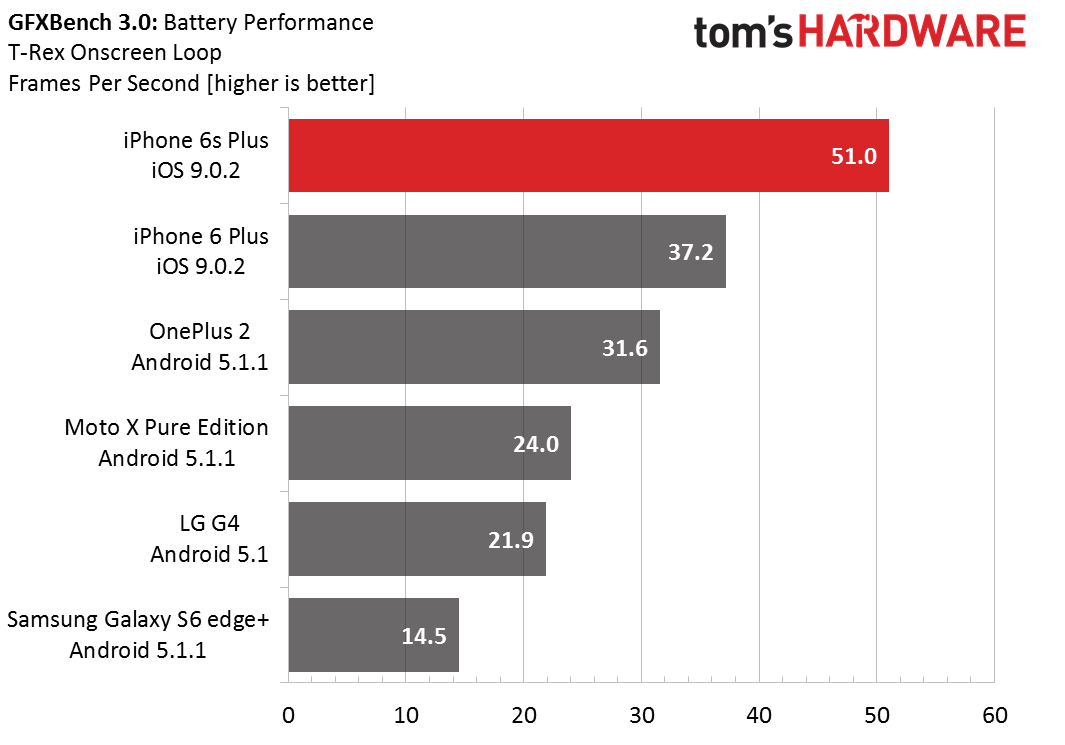
Clearly, the move to a smaller FinFET node is not enough to offset the increased energy demands of the PowerVR GT7600 GPU’s two extra cores and higher clock frequency, since both new iPhones show a regression in battery life during intense gaming. Looking at performance per watt, however, tells a different story: the iPhone 6s gets 13 percent less battery life but 23 percent better performance than the iPhone 6, while the 6s Plus gets 23 percent less battery life but 37 percent better performance than the 6 Plus. That’s a nice increase in efficiency, especially after factoring in the new iPhones’ 5 percent smaller batteries.
The other phones in this test all last longer than the iPhone 6s or 6s Plus, but that’s only because they exhibit moderate to heavy thermal throttling. The Galaxy S6, for example, throttles back to about 50 percent peak performance to keep from overheating.
While not shown here, we also ran this test with Apple’s Low Power Mode enabled. The new battery-saving feature underclocks the CPU but leaves the GPU frequency alone, since we saw no difference in performance or battery life in GFXBench. So basically, you cannot play games and extend your battery life too.
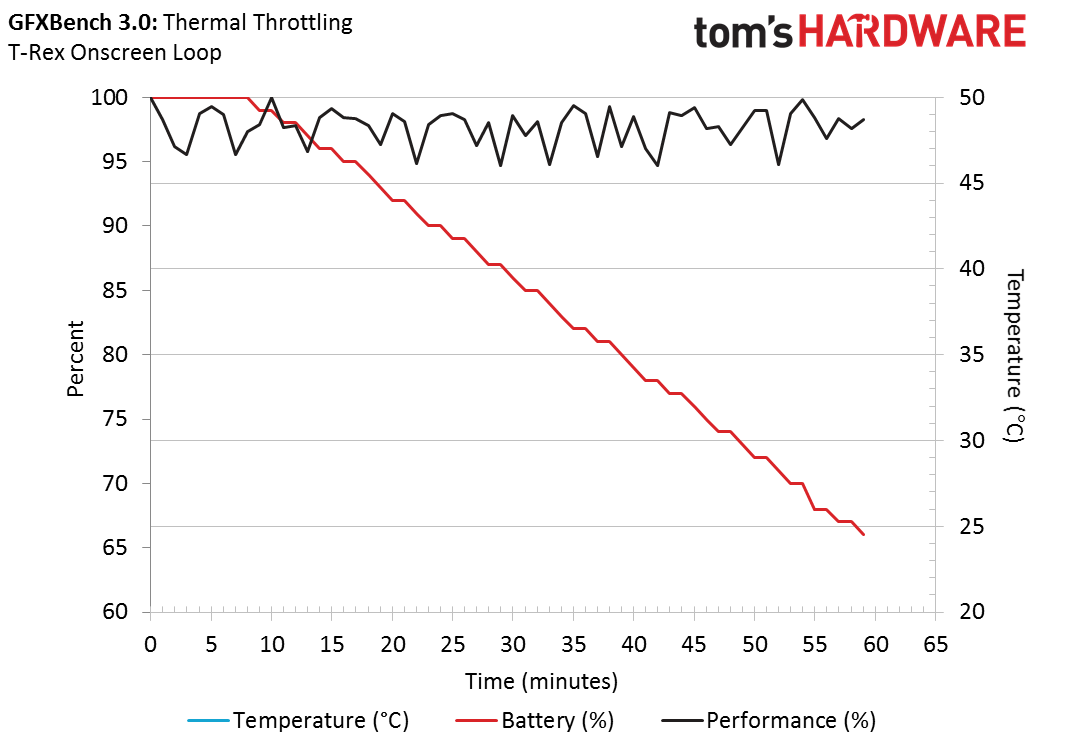
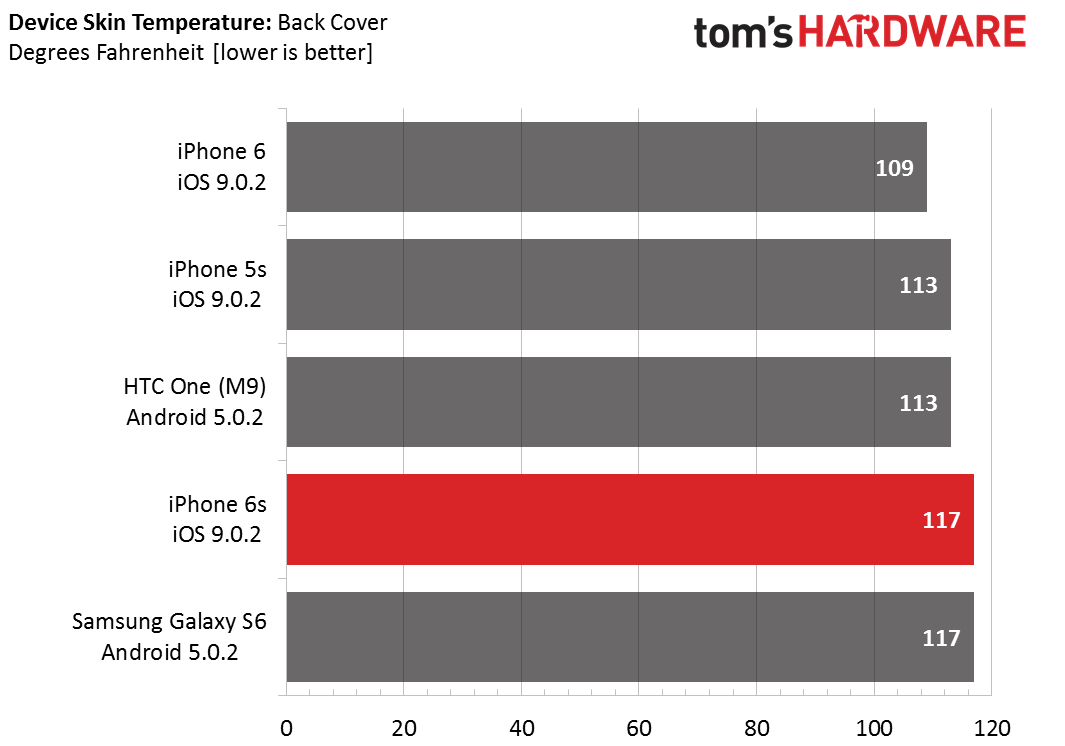
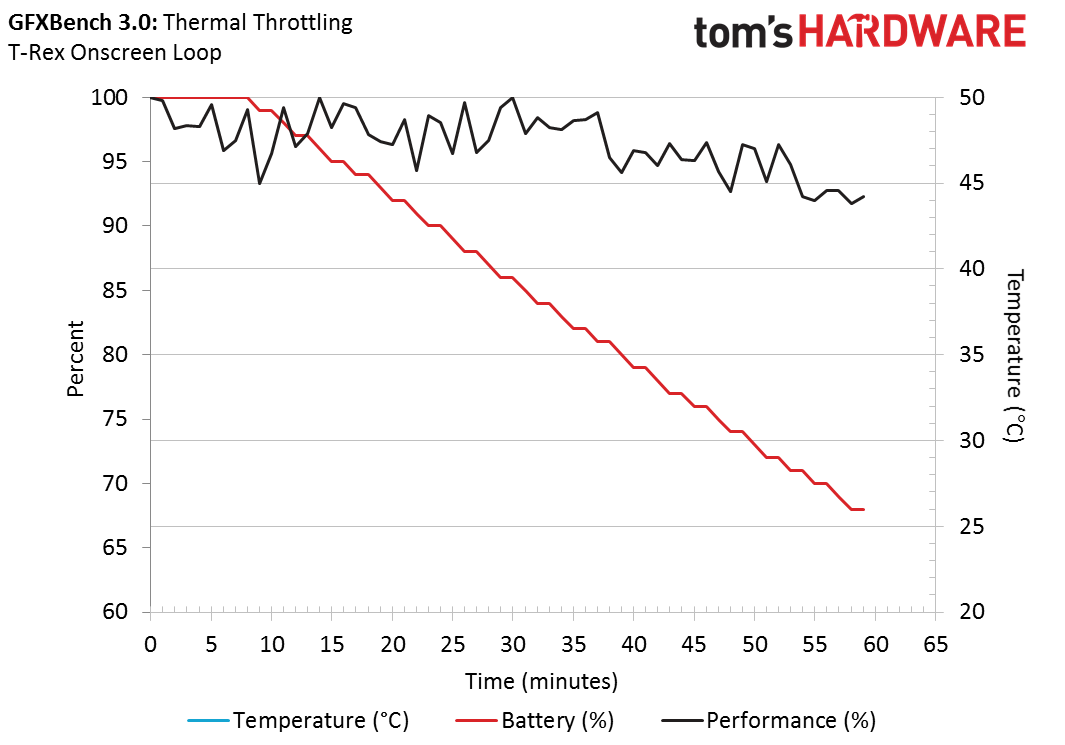
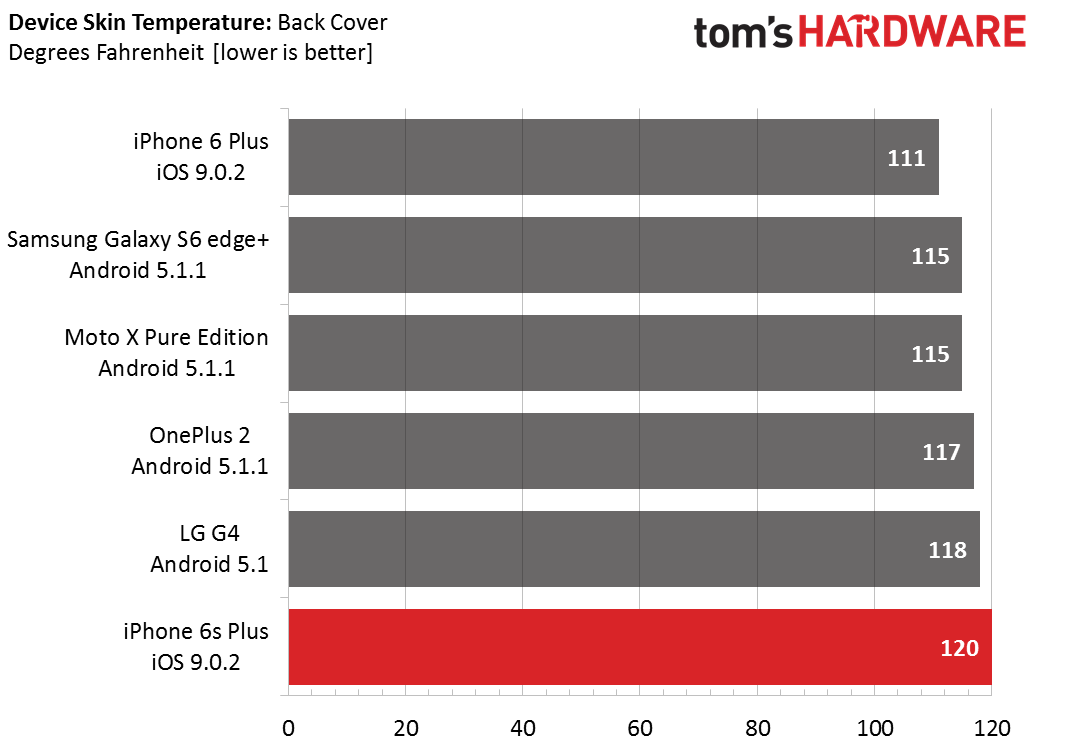
Performance stability while gaming is excellent for both devices. Performance does fluctuate quite a bit, but it never drops below 95 percent for the iPhone 6s or 92 percent for the 6s Plus, even after an hour running T-Rex. The phones do get noticeably warmer, though, with temperatures up about 9 °F over the previous generation. The maximum skin temperature for the 6s Plus reaches 120 °F, which is considered the upper limit for comfort.
It’s unfortunate we do not see an improvement in battery life, but given the A9’s performance gains, avoiding a large regression is not so bad. The iPhone 6s still does not include wireless or quick charging either, which makes charging a somewhat inconvenient affair.
Current page: Battery Life And Thermal Throttling
Prev Page GPU And Gaming Performance Next Page Conclusion-
Shankovich I know lots of people are going to trash talk Apple here, but most of us know our hardware and thus should know a bit better. 2 gigs of ram seems low, but Apple's software is highly optimized and we know you can have a bunch of stuff open without it being that noticeable.Reply
Secondly, unless your eye ball touches the screen, you're not going to see a difference between a 1080p screen and above at typical viewing distances for a phone. (If you're going to complain about gaming on it, this site isn't for you). "So why don't they just put a higher res screen on it for the marketing aspect?" Well, aside from them being Apple, which is enough for most people, a higher res screen that most will barely be able to tell from FHD also means more work for the GPU, which means less battery life.
LG, Samsung, etc all do the same thing year over year, that being incremental upgrades, like Apple does. They're all the same. We've reached a saturation point in mobile devices now (probably did 2 years ago). -
10tacle What year is this? Why are we still seeing "new" so-called high end phones with 1080p 5.5" displays and 16GB base memory offerings? And for anyone who says that you can't really see the difference between 1080p and 1440p on such a small screen, get your eyes checked. Happy Samsung Note 5 owner here, upgrading from an 1136p, 326ppi iPhone 5S. (The Galaxy 6 and Note 5 are 1440p with 518ppi for anyone who cares).Reply -
monsta ummmmm don't you think you are just a bit late reviewing this phone that was released months ago ? LOLReply -
iam2thecrowe Seems ok if price isn't an object, most plans include the cost of the phone in a monthly payment now anyway. I will be getting one for work later this year, just hopefully battery life is much better than the 5s which is my current work phone. I wouldn't get one if I had to pay for it out of my own pocket though.Reply -
razor512 While I don't like the iphone, more companies need to follow their lead with the SOC. Instead of focusing on 8 slower cores (of which 4-6 of then remain idle most of the time since many tasks are not multithreaded. Focus on improving the IPC of the CPU and run newer but faster cores.Reply -
Astone3145 "QHD is only really necessary for AMOLED panels (due to having fewer red and blue subpixels than RGB stripe LCD panels), virtual reality applications (because the screen is closer to your eyes), and for people who augmented their genetic code with eagle DNA."Reply
I would love to have access to some of that augmented eagle DNA! -
MobileEditor ReplyI would love to have access to some of that augmented eagle DNA!
Do you struggle to see faraway objects? Find yourself squinting to read small text on your smartphone? Thanks to a breakthrough in genetic engineering, you can permanently upgrade your vision by augmenting your own blueprint with eagle DNA!
* See up to five times farther
* Experience more vivid colors
* See UV light
These are just a few of the advantages that await you after only a single, semi-painless treatment.
This treatment is not approved by the FDA. Some people may experience side effects, including upset stomach, loss of bone mass, accelerated growth of toenails, hardening of the lips, and nose bleeds. Please contact your doctor immediately if you feel the urge to jump from tall structures and soar above the trees, as this could indicate a potentially fatal condition. -
none12345 When your hardware is so far behind the competition its easy to make 70% gains lol. On one hand it's nice to see apple finally putting a little more hardware in their pones; on the other hand, flash is very cheap these days, and only 16 gigs is just downright laughable. The fact that put in like $5-15 more of ram and charge you $100-$300 is just a joke.Reply
And ya at minimum i would expect a 1080p screen, but really 1440p woudl be better. I dont know if phones need 4k in 5-6" just yet, at some point, sure. If you look at all the vr phone boxes coming out lately, you will absolutely notice a huge difference in screen res at a few inches from your eyes. Even 8k is not sufficient for that purpose.
In short tho, too little, too late, no thanks.

